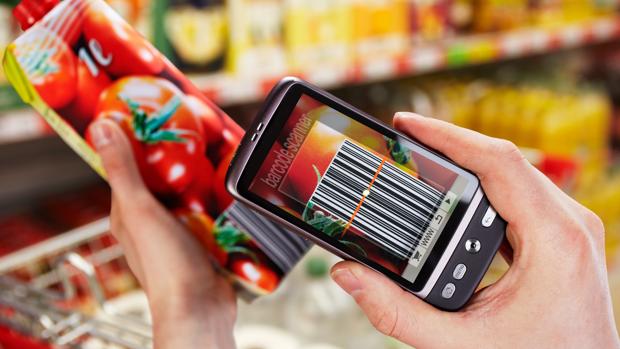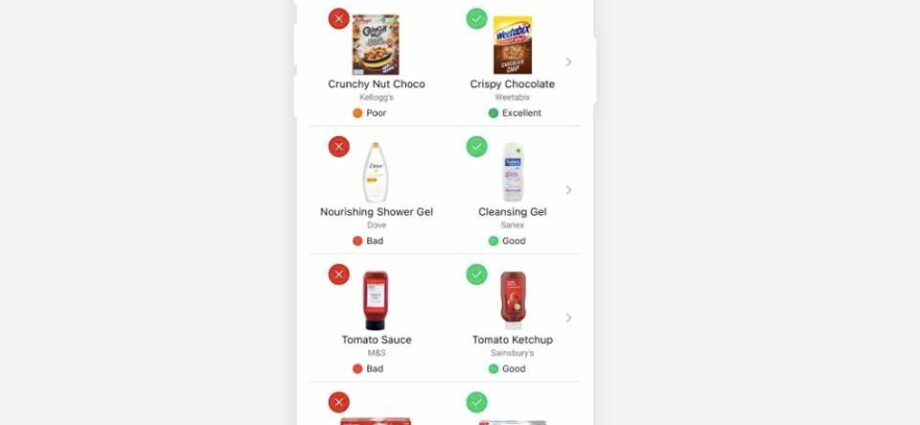Contents
What do apps that rate food labels value?
Tags
The “Nova” classification and the “Nutriscore” system are usually the two main criteria that food classification applications follow.

In the midst of recent enormous interest in how we eat, the war against ultra-processed foods and the attention we pay to understand the ingredients that make up our food, nutrition apps have arrived, those that, with a simple “scan” of the barcode, they say whether a product is healthy or not.
But it is not all that easy. If an application says that this food is healthy, is it really? It is very important to take into account that each of them follows different classification criteria and that the same product can be more or less healthy depending on the app we use.
We break down the criteria followed by the three most famous applications (“MyRealFood”, “Yuka” and “CoCo”) to understand the classification given by each of them.
«MyRealFood»
The “realfooders”, those followers of the nutritionist dietitian Carlos Ríos, have the app «MyRealFood» between your headend programs. Ríos, who defends that the healthiest way to eat is by consuming only “real food”, products that have no more than five ingredients in opposition, practically leads the fight against ultra-processed foods.
With the launch of the application, the professional explained to ABC Bienestar the classification method that it follows to determine which foods are healthy and which are not: «We use an algorithm based on studies of the New classification from the University of São Paulo in Brazil ”, and is combined with my experience as a dietitian and nutritionist. In this way we simplify this «Nova» classification. We also take into account the amount of certain ingredients in the products. For example, if it contains less than 10% of a product, even if they are ingredients that are not very healthy, as they are small amounts we classify it as good processed ».
How does the «Nova system work?
The «Nova» system classifies food, not by its nutrients, but by its degree of processing. Thus, it values them for their industrialization. The system, created by a group of scientists in Brazil, is supported by both FAO (United Nations Food Organization) and WHO (World Health Organization).
This method classifies foods into four groups:
-Group 1: natural foods such as vegetables, animal meat, fish, eggs or milk.
– Group 2: culinary ingredients, those used for cooking and seasoning.
– Group 3: processed foods that have fewer than five ingredients.
– Group 4: ultra-processed foods, high in salt, sugar, fat, stabilizers or additives, for example.
«CoCo»
Another option that we find in the market is «CoCo», which fulfills a function similar to that of the previous app. Bertrand Amaraggi, co-founder of the project, explains the process they currently follow to classify food: «We we combine two of the most famous systems, «Nova» and «Nutriscore». The first allows us to measure the degree of processing of a food; the second classification serves to know the nutritional note of a product ».
“First we classify them with ‘Nova’ and then we apply the ‘Nutriscore’ system, but between products in the same category. It is necessary to do so, because if we only applied the second system, for example low-sugar soft drinks would be classified as healthy, when they are ultra-processed ”, Amaraggi points out.
The co-founder explains that, in a few weeks, the form of classification of the «app» is going to change: «We are going to have a new algorithm to classify foods from 1 to 10, because now, when we find ourselves with two notes, it can be somewhat complex, “he explains. «For this new classification, we are going to add the WHO criteria. This has created 17 categories of products, in which we are going to support ourselves. And also following its guidelines, the app will indicate whether a product is suitable for children or not.
«Yuka»
Since its birth, «Yuka», an app of French origin, has been surrounded by controversy. This application (which not only analyzes food, but also also classifies beauty products) bases most of the food grade on the “Nutriscore” rating. Classify the products as a traffic light, with a score of zero to 100, they can be classified as good (green), mediocre (orange) and bad (red).
Those responsible for the application explain the criteria they follow to award the scores: «Nutritional quality represents 60% of the grade. The nutritional data calculation method is based on the “Nutriscore” system adopted in France, Belgium and Spain. The method takes into account the following elements: calories, sugar, salt, saturated fat, protein, fiber, fruits and vegetables.
On the other hand, additives represent 30% of the product grade. «For this we rely on sources that have studied the dangerousness of food additives», They point out. Finally, the ecological dimension represents 10% of the grade. Products considered organic are those that have the European eco-label.
Those responsible also explain how to classify cosmetic and hygiene products: “Each ingredient is assigned a risk level based on its possible effects or proven effects on health. The potential risks associated with each ingredient are displayed in the app, along with the associated scientific sources. Ingredients are classified into four risk categories: no risk (green dot), low risk (yellow dot), moderate risk (orange dot), and high risk (red dot).
Those most critical of this application argue that, because a food contains additives, it does not necessarily mean that it is not healthy, just as that a product is “ECO” does not reflect that it is more or less healthy. Also, there are those who consider that the “Nutriscore” rating should not be taken as a reference.










